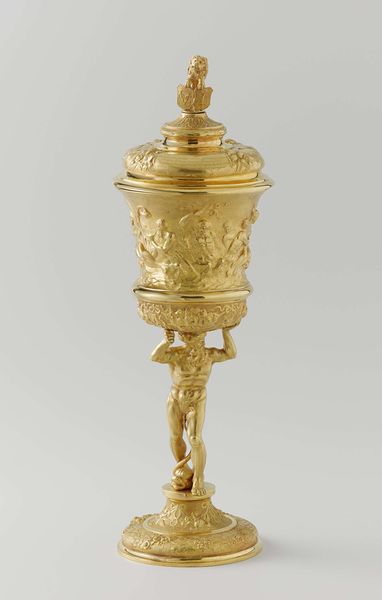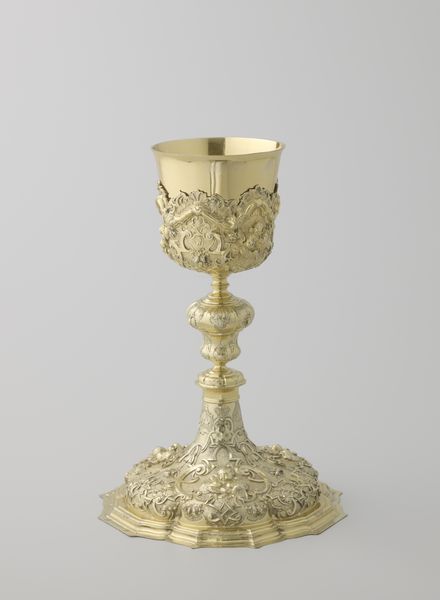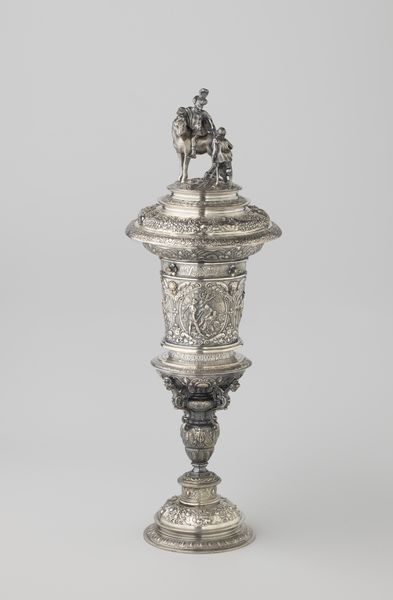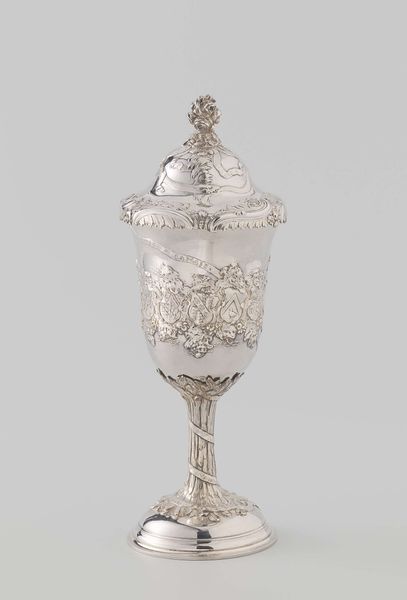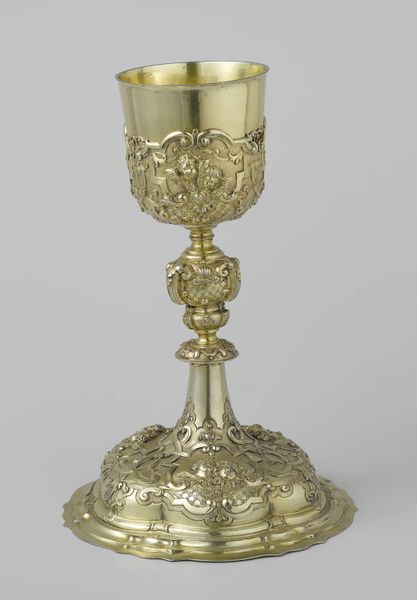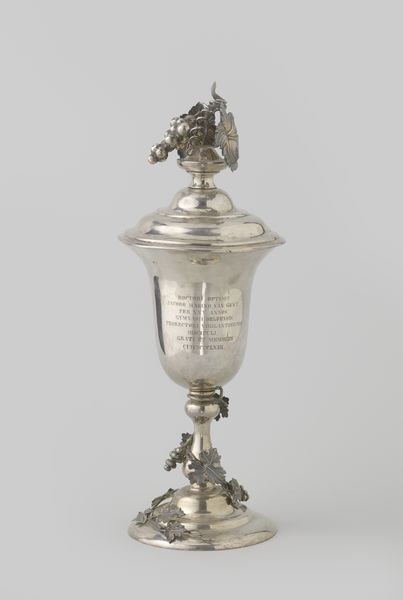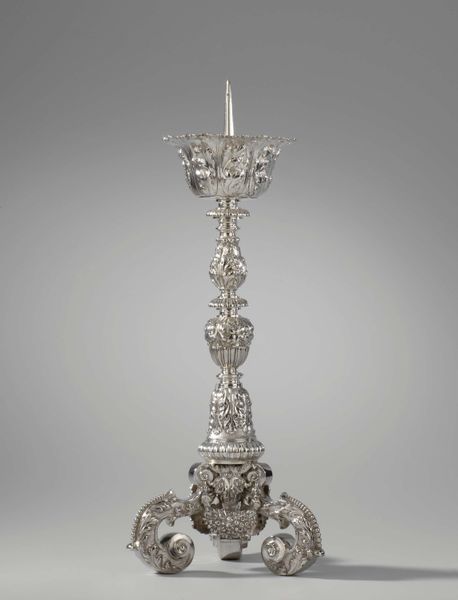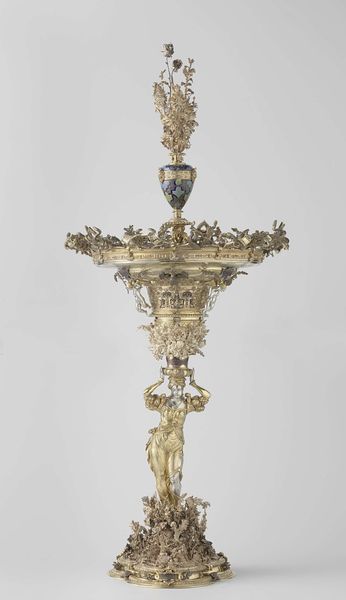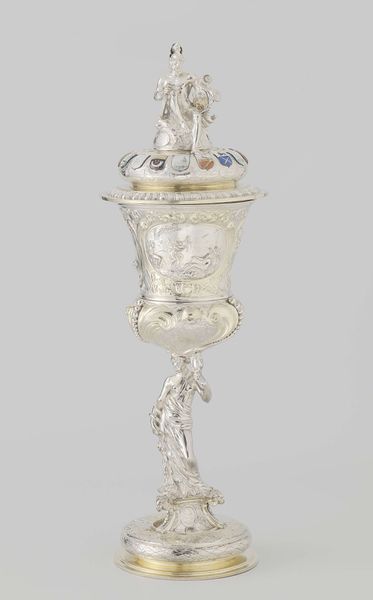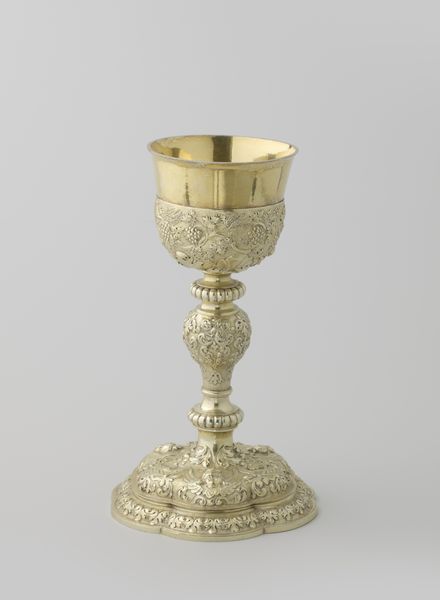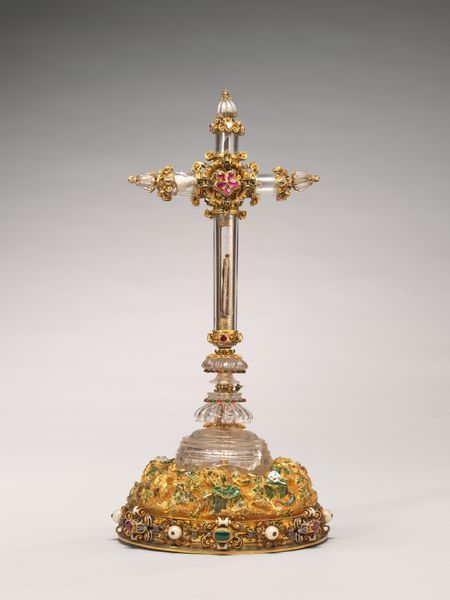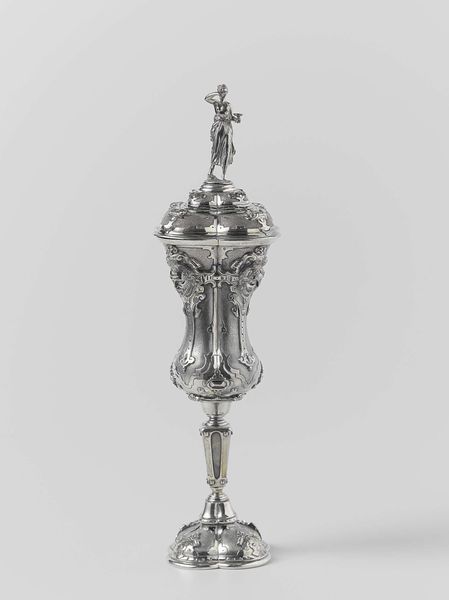
Dimensions: height 55.5 cm, diameter 17.5 cm, diameter 13.0 cm
Copyright: Rijks Museum: Open Domain
Lambertus Hannosset crafted this silver ciborium in the eighteenth century. The object's function was explicitly religious; ciboria like this one held the Eucharist during Holy Communion. Consider the social context: the Catholic Church wielded immense cultural and political power. Artisans like Hannosset relied on ecclesiastical patronage. But how did the visual language of such objects reinforce existing power structures? The use of precious metals implies wealth and status. The intricate designs of the crown, cherubic figures, and radiating sunburst create a sense of awe and reverence befitting the divine. Examining Hannosset's ciborium is a reminder that art rarely exists in a vacuum. Art historians explore archival records and period documents to decipher the full meaning of art objects. Understanding its place within these networks reveals art as a reflection of, and active participant in, its historical moment.
Comments
No comments
Be the first to comment and join the conversation on the ultimate creative platform.

